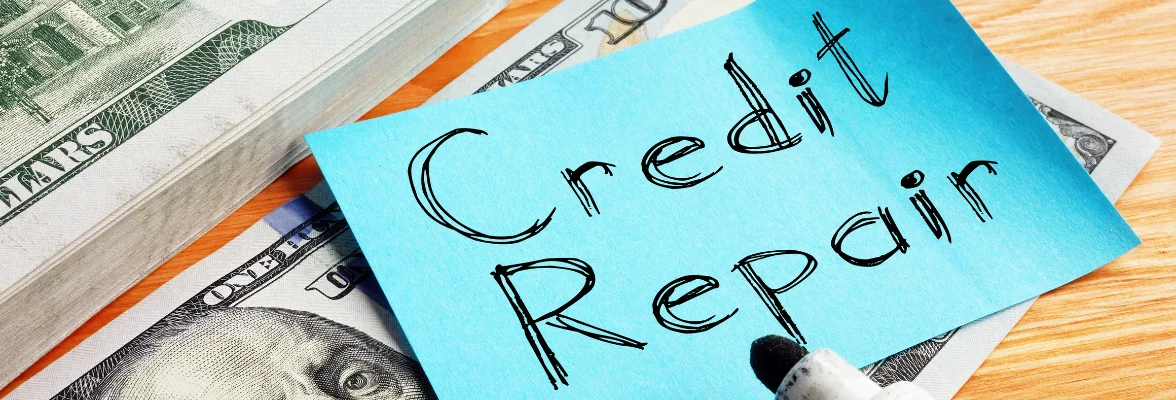Your credit score plays a pivotal role in your financial life. It influences your ability to secure loans, obtain favorable interest rates, and even impacts your job prospects and housing options. If you find yourself burdened with a low credit score due to errors, inaccuracies, or financial missteps, credit repair can be your path to financial redemption. In this comprehensive guide, we will walk you through the basics of credit repair, offering a step-by-step approach to help you understand the process and improve your creditworthiness.
What is Credit Repair?
Credit repair is the process of identifying and resolving errors, inaccuracies, and negative items on your credit report to improve your credit score. These negative items may include late payments, charge-offs, collections, and more. By addressing and correcting these issues, you can take control of your credit and put yourself on a path to financial success.
Understanding Your Credit Report
Your credit report is a thorough record of your credit history, including borrowing and repaying actions. The first step in credit repair is to obtain copies of your credit reports from the three major credit bureaus – Equifax, Experian, and TransUnion. By law, you are entitled to one free credit report from each bureau every 12 months through annualcreditreport.com.
Identifying Errors and Negative Items
Once you have your credit reports, thoroughly review each one to identify any errors, inaccuracies, or negative items that may be dragging down your credit score. Common errors may include incorrect personal information, accounts that do not belong to you, and outdated account statuses.
Disputing Inaccurate Information
If you find inaccuracies or errors on your credit reports, the next step is to dispute them with the credit bureaus. You can initiate a dispute online, by mail, or by phone. The credit bureaus have 30 days to investigate your dispute and either verify, correct or delete the disputed information. Prepare to give supporting documentation to back up your claim.
Addressing Negative Items and Late Payments
For legitimate negative items and late payments on your credit report, there are steps you can take to address them. First, focus on making on-time payments going forward to demonstrate responsible financial behavior. For late payments, you can contact the creditor and request a goodwill adjustment, asking them to remove the late payment from your credit report as a one-time courtesy.
Negotiating Debt Settlements and Payment Plans
If you have outstanding debts in collections, you may have the option to negotiate a settlement or set up a payment plan with the debt collector. Debt settlements involve paying a reduced amount to satisfy the debt, while payment plans allow you to make regular payments over time. Make sure to get any agreements in writing before making payments.
Building Positive Credit Habits
Improving your credit goes beyond just removing negative items. To rebuild your credit, focus on establishing positive credit habits. This includes paying bills on time, keeping credit card balances low and refraining from opening unnecessary new credit accounts.
Monitoring Your Progress
As you implement credit repair strategies, it’s essential to monitor your progress. Keep track of changes in your credit reports and scores, as well as the status of your disputes and negotiations. Regularly review your credit reports to ensure that any corrections have been made.
Seeking Professional Credit Repair Services
While you can engage in credit repair on your own, some individuals may find it beneficial to seek professional credit repair services. Credit repair companies have experience in dealing with credit bureaus and creditors, and they can streamline the process for you. However, it’s crucial to research and choose a reputable credit repair company.
Understanding Credit Utilization Ratio
The credit utilization ratio denotes the percentage of available credit that is currently being used. It is an important aspect of determining your credit score. Responsible credit management entails keeping your credit utilization low, ideally below 30%.
If your credit cards are maxed out or close to their limits, it can negatively impact your credit score. Focus on reducing credit card balances to improve your credit utilization ratio and boost your credit score.
Dealing with Bankruptcies and Foreclosures
Bankruptcies and foreclosures can have severe and long-lasting effects on your credit. Bankruptcies remain on your credit report for up to ten years, while foreclosures may linger for seven years. While credit repair cannot remove legitimate bankruptcies or foreclosures, over time, their impact on your credit score diminishes. Focus on building positive credit habits post-bankruptcy or foreclosure to demonstrate financial responsibility.
Patience and Persistence
Credit repair is not an overnight process. It requires patience and persistence. Improving your credit takes time, but with consistent effort and responsible financial habits, you can see positive changes in your credit score over time.
Rebuilding Credit after Credit Repair
After successfully completing the credit repair process, it’s time to focus on rebuilding your credit. Consider applying for a credit builder loan or a small credit card to further establish a positive credit history. Responsible credit behavior will reinforce the improvements made during the credit repair journey.
Conclusion
Understanding the basics of credit repair is essential for anyone seeking to improve their creditworthiness and financial standing. By obtaining and reviewing your credit reports, identifying errors and negative items, disputing inaccuracies, and building positive credit habits, you can take control of your credit and set yourself on the path to financial success.
Remember that credit repair is a gradual process that requires patience and perseverance. Be proactive in addressing negative items, negotiating settlements, and monitoring your progress. If needed, consider seeking professional credit repair services from reputable companies.
By following this step-by-step guide, you can empower yourself with the knowledge and tools needed to navigate the credit repair journey effectively. Take charge of your credit today, and watch as your improved credit score opens up new opportunities and financial possibilities for your future.

